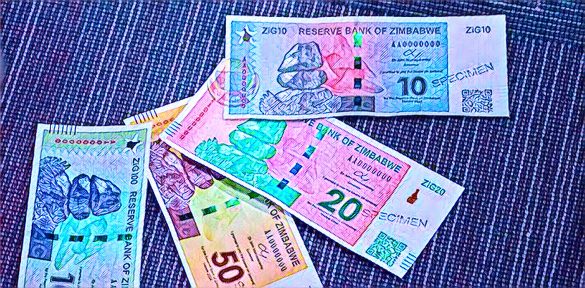The introduction of the Zimbabwe Gold (ZiG) currency in April has demonstrated its strength against major currencies, particularly the United States dollar. This indicates a growing confidence in the local currency and suggests a positive shift in the nation’s economic situation.
Upon its launch on April 5, ZiG initially traded at 13.5616 to the United States dollar. As of yesterday, it was trading at 13.7241 to the United States dollar. This upward trend shows a strengthening of the local currency, which is a key part of a broader strategy to reduce dependency on the US dollar.
The introduction of ZiG is part of a comprehensive plan to encourage the use of the local currency. Even though the US dollar still represents about 80% of all local transactions, Reserve Bank of Zimbabwe (RBZ) governor, John Mushayavanhu, remains hopeful. He anticipates that transactions in the local currency will reach 30% this year and increase to 40% by 2025 as the economy continues to move away from the US dollar. President Emmerson Mnangagwa has also expressed support for ZiG, stating that it will eventually become the sole legal tender. Currently, the use of multiple currencies is permitted until 2030, giving ZiG a decade to establish itself as the primary currency.
The value of ZiG is backed by gold and cash reserves. The central bank has announced plans to strengthen these reserves to further support the currency. This move is expected to restore the local currency’s value, which the previous Zimbabwe dollar had lost. According to the International Monetary Fund (IMF), the Zimbabwe dollar depreciated by about 260% in the first three months of the year. For now, confidence in ZiG is growing, with it accounting for the majority of transactions in local supermarkets.
An encouraging example of this growing confidence is in the education sector. Schools that previously required parents to pay fees exclusively in US dollars are now accepting ZiG. This shift demonstrates the increasing acceptance and trust in the local currency. Given the history of sharp depreciation of the local currency, the introduction of ZiG has brought much-needed price stability. This highlights the importance of the central bank’s tight monetary policy to support the use of the local currency. The RBZ has pledged not to engage in activities that could lead to hyperinflation.
To maintain this positive momentum, the central bank must remain committed to clear and consistent policies. Mixed messages should be avoided, and all available tools should be used to support the local currency. The RBZ’s measures have significantly boosted the local currency, proving more effective than pursuing suspected foreign currency traders. The Ministry of Finance, Economic Development, and Investment Promotion must also align its measures with those of the central bank. They need to manage the budget carefully, especially considering the financial pressures expected this year due to the El Niño-induced drought.
In a recent assessment, the IMF highlighted the challenges ahead. The cost of servicing debt related to operations outside the regular budget and weaker-than-expected revenues, combined with drought-related spending, has created a significant financing gap in the 2024 budget. Closing this gap without undermining the monetary policy stance is crucial.
Zimbabweans share the IMF’s concern that, in tough times, authorities might resort to extraordinary measures, which have had negative consequences in the past. However, the current trajectory with ZiG offers hope for a more stable and prosperous economic future.
Looking ahead, the central bank’s commitment to its monetary policy will be crucial. They must continue to support the local currency through tight fiscal discipline and clear communication. This strategy will help build and maintain confidence in ZiG, ensuring it becomes a reliable and stable currency for Zimbabwe. The RBZ’s approach seems to be working, as evidenced by ZiG’s increasing acceptance in everyday transactions, which is a positive sign. As more people and businesses adopt the local currency, its stability and value are likely to further improve.


